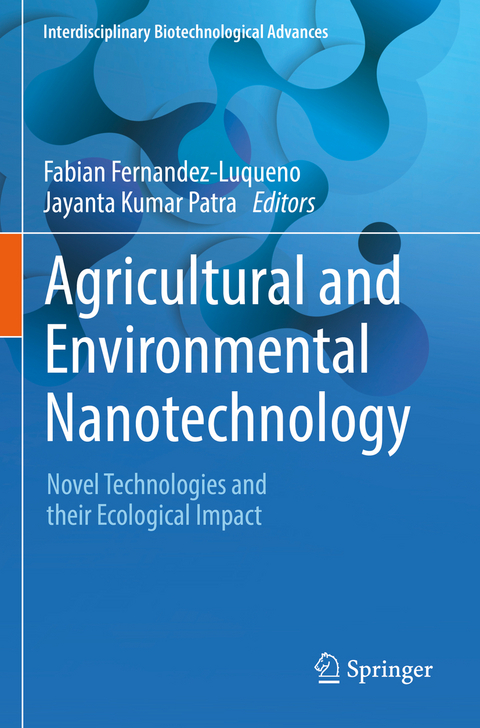
Agricultural and Environmental Nanotechnology
Springer Verlag, Singapore
978-981-19-5456-6 (ISBN)
Fernández-Luqueño FabiánCenter for Research and Advanced Studies of the National Polytechnic Institute (Cinvestav), Mexico. Jayanta Kumar PatraResearch Institute of Biotechnology & Medical Converged Science, Dongguk University, Republic of Korea
Section 1 An introduction to nanoagriculture, agronanobiotechnology and nanoremediation.- Chapter 1. Nanoagriculture: Advantages and drawbacks.- Chapter 2. Agronanobiotechnology: present and prospect.- Chapter 3. Nanoremediation.- Chapter 4. Cutting-edge technologies in agriculture without hampering sustainable development.- Section 2 Nanoagriculture.- Chapter 5. Controlled Delivery of Elements, Molecules, Genetic Material, or Organisms.- Chapter 6. Nanosensors for crop management.- Chapter 7. Nanotechnology for pest management.- Chapter 8. Nanotechnology in water and wastewater treatment.- Chapter 9. The contribution of the nanotechnology to the farmer wellbeing.- Section 3 Agronanobiotechnology.- Chapter 10. Magnetofection for plant breeding.- Chapter 11. Nano and OMICs technologies.- Chapter 12. Interactions between nanomaterials and plant-microbe partnership.- Chapter 13. Nanobiological pest control.- Section 4 Nanoremediation.- Chapter 14 Nanoremediation of heavy metals in agricultural soils.- Chapter 15 Nanoremediation of organic pollutants.- Chapter 16 Phytobial remediation.- Chapter 17 Nanobioremediation.- Section 5 Ecological impacts.- Chapter 18 Nanomaterials in the human food chain.- Chapter 19 Nanotechnological achievements and the environmental degradation.- Chapter 20 Accumulation of engineered nanomaterials in soil, water and air.- Chapter 21 Collateral effects of nanopollution on human and environmental health.
| Erscheinungsdatum | 17.01.2024 |
|---|---|
| Reihe/Serie | Interdisciplinary Biotechnological Advances |
| Zusatzinfo | 1 Illustrations, black and white; XI, 674 p. 1 illus. |
| Verlagsort | Singapore |
| Sprache | englisch |
| Maße | 155 x 235 mm |
| Themenwelt | Naturwissenschaften ► Biologie ► Ökologie / Naturschutz |
| Technik ► Umwelttechnik / Biotechnologie | |
| Weitere Fachgebiete ► Land- / Forstwirtschaft / Fischerei | |
| Schlagworte | Agricultural Nanotechnology • Environmental Nanotechnology • genetic material • Molecules • nanobiotechnology • Organisms |
| ISBN-10 | 981-19-5456-9 / 9811954569 |
| ISBN-13 | 978-981-19-5456-6 / 9789811954566 |
| Zustand | Neuware |
| Informationen gemäß Produktsicherheitsverordnung (GPSR) | |
| Haben Sie eine Frage zum Produkt? |
aus dem Bereich


